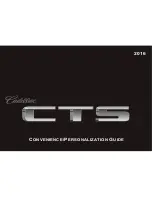
Tec3r Manual Version 1.11
- Page 10 -
©2017 Electromotive, Inc.
A. Installing the Tec3-r System
A.1. How it All Works: The Two Pages You Need to Read
The goal behind Electromotive’s Total Engine Control product line is to provide complete, high-
resolution control of all functions of the modern engine, and to do so with a user-friendly interface.
Consequently, the
Tec3-r
is designed to easily control a huge number of complex engine management
functions through the hands of a user who is new at the game.
En
gine Speed & Position = Crank Sensor…
What separates our engine management systems from those of our competitors is the fact that our
products are all designed around an ultra high-resolution ignition. For this reason, we use a 60(-2) tooth
crank trigger wheel to give the computer an extremely accurate engine position input. This is also the reason
that we do not support any other types of trigger inputs. Take, for instance, the flying magnet trigger input
used by some manufacturers: 8 cylinder engines have 4 magnets mounted to the crank trigger wheel. Our
60(-2) tooth trigger has
15 TIMES MORE RESOLUTION!
From a magnetic sensor aimed at the trigger
wheel, the
Tec3-r
receives its input for engine speed and position.
Engine Load = MAP Sensor…
As nice as the 60(-2) tooth trigger wheel is for determining engine speed and position, more is
necessary to perform ignition and fuel control; namely a load input. While many OEM’s use Mass Airflow
(MAF) sensors to determine the airflow (and thus the load) of an engine, Electromotive systems are designed
around Manifold Air Pressure (MAP) sensors as the load-determining device. MAP sensors simply plug into
the intake manifold of the engine (after the throttle), and are inherently easier to install than MAF sensors
since they are not sensitive to vacuum leaks or engine airflow requirements. A 1-Bar MAP sensor is
designed for naturally aspirated engines. A 2-Bar sensor is used for turbo/supercharged engines with up to
15psi (about 200kPa absolute) manifold boost. A 3-Bar sensor is good for up to 30psi (300kPa), while a 4-
Bar is good for up to 45psi (400kPa). Choose the appropriate sensor for the application, and you are done.
Ignition Advance Control…
Once the MAP sensor and crank sensor are installed, the
Tec3-r
has inputs for RPM and load.
Under steady-state conditions on a fully warmed-up engine, these are the only necessary inputs for the Tec3-
r to control the fuel and ignition curves. Control of the ignition advance curve is quite simple: there is a
table of RPM vs. MAP in which the desired ignition advance angle is entered for every point. The table can
be made in any size from 8
x
8 to 16
x
16 data points. Between each data point, there is a 256 point
interpolation occurring. This keeps the advance curve from “stepping” from point-to-point. Additionally, it
means that the engine can be tuned with only a few input numbers; some other systems on the market rely on
the tedious input of hundreds of numbers to obtain an ignition advance curve that is still not as smooth
between data points as ours.
Fuel Injector Control…
Control of the fuel curve is very simple as well. When the user first sets up a calibration, the Tuning
Wizard is generally used. The Wizard asks for the engine horsepower, peak RPM, number of injectors, and
the amount of manifold boost. From these, a raw fuel curve is established. Most importantly, the User
Adjustable Pulse Width (UAP) is established. UAP is the fuel injector pulse width when the MAP sensor
reading is full-scale (wide-open throttle on a 1-Bar MAP sensor, 15psi boost on a 2-Bar sensor, etc.). The
Содержание tec3r
Страница 17: ...Tec3r Manual Version 1 11 Page 17 2017 Electromotive Inc ...
Страница 125: ...Tec3r Manual Version 1 9 G Page 125 2008 Electromotive Inc Appendix VIII Tec3 r Wiring Harness Layout ...
Страница 126: ...Tec3r Manual Version 1 9 G Page 126 2008 Electromotive Inc Appendix IX Tec3 r Power Harness Schematic ...











































